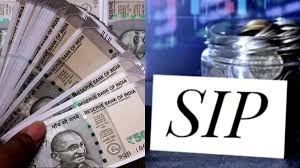

How much SIP will be required to create a fund of 1 crore?
Whenever we plan our retirement, we usually estimate the value of money in today's value. But have we thought about how much our money will be worth after 20-30 years? Inflation gradually reduces the purchasing power of money. That is, what seems cheap today, can be very expensive in the future.
How does inflation affect?
Let us understand with an example, suppose, in 2010 the price of a gas cylinder was Rs 350, but in 2025 it has increased to 1,050. That is, the prices have increased at an average rate of 7.6 percent annually. Similarly, in 2009, 2 liters of petrol was available for Rs 100, but today only 1 liter is available. It is clear that inflation has almost halved the power of money during this period.
What do the inflation figures say?
The government uses the Consumer Price Index (CPI) to measure inflation, which tracks the prices of essential items like food, clothing, home, transport, health. In february 2025, the cpi inflation rate was 3.61 percent, but on average it remains around 5 percent. In 2013, the cpi inflation rate reached 12.2 percent, while in 2017 it fell to 1.5 percent. RBI tries to keep inflation at a target of 4 percent, but in reality the prices of essential items are always higher than this.
What is the real return on investment?
According to a report by Financial Express, fixed income schemes (such as bank FD, PPF, EPFO, post office savings) give 6 percent. 8.25 percent annual return, but after deducting inflation, the real return remains only 2-3 percent. Equity-linked investments like mutual funds offer 12 per cent-15 per cent annual returns, but after adjusting for inflation, the actual returns are in the range of 6-9 per cent.




 click and follow Indiaherald WhatsApp channel
click and follow Indiaherald WhatsApp channel